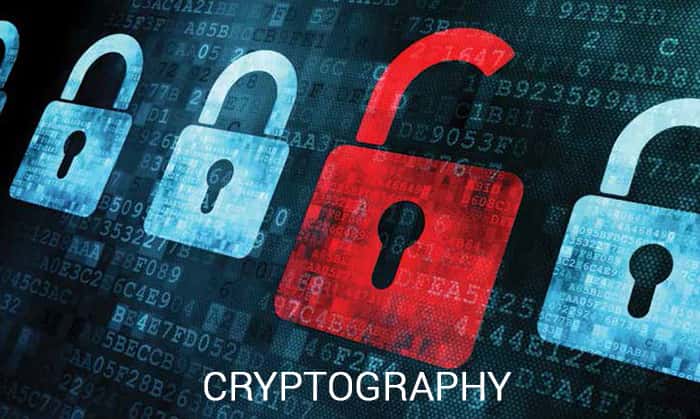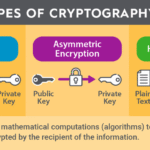In the contemporary landscape of cybersecurity, the significance of cryptography cannot be overstated. As individuals and organizations increasingly rely on digital platforms for communication, commerce, and data storage, the potential vulnerabilities associated with this dependence become glaringly apparent. To effectively navigate this intricate terrain, understanding cryptography’s multifaceted dimensions is imperative. However, how much of this knowledge is essential for those engaged in cybersecurity? The answer is nuanced, encompassing fundamental concepts, advanced techniques, and the various applications that underlie modern security protocols.
Initially, it is vital to grasp the foundational principles of cryptography. At its core, cryptography is the science of encoding and decoding information to maintain confidentiality, integrity, and authenticity. For cybersecurity professionals, a rudimentary understanding of symmetric and asymmetric encryption schemes is fundamental. Symmetric encryption employs a single key for both encryption and decryption, exemplified by algorithms like AES (Advanced Encryption Standard). In contrast, asymmetric encryption utilizes a pair of keys—a public key for encryption and a private key for decryption—demonstrated by protocols such as RSA (Rivest-Shamir-Adleman). Grasping these concepts is essential as they serve as the backbone of secure communication.
Beyond foundational knowledge, cybersecurity experts must delve into the various cryptographic hash functions, which are crucial for data integrity. Hash functions, such as SHA-256 (Secure Hash Algorithm 256-bit), convert data into a fixed-size string of characters. This transformation creates a unique fingerprint for the original data, allowing any alterations to be readily identifiable. Understanding how and when to utilize hash functions is vital, especially in securing passwords and verifying the integrity of transmitted data. The implications of improper hash function usage can be dire, potentially exposing sensitive information to unauthorized parties.
The landscape of cyber threats emphasizes the importance of public key infrastructure (PKI). PKI establishes a framework for secure communications, leveraging digital certificates to authenticate entities in a network. A cybersecurity professional should grasp the role of certificate authorities (CAs) and the process of certificate validation. This process ensures that communications are taking place between trusted entities, thereby thwarting potential man-in-the-middle attacks. Comprehending PKI is instrumental for those responsible for deploying secure systems and managing sensitive information.
An understanding of cryptographic protocols is also paramount for cybersecurity operatives. Protocols such as TLS (Transport Layer Security) and SSL (Secure Sockets Layer) are integral for securing web communications. A comprehensive knowledge of these protocols includes the mechanisms involved in establishing a secure connection, negotiating the encryption standards, and ensuring data is transmitted securely over the internet. With the prevalence of e-commerce and online banking, organizations must ensure that they implement these protocols rigorously to protect user data.
Moreover, familiarity with vulnerabilities associated with cryptographic implementations is equally critical. Cybersecurity professionals should be acutely aware of attacks such as side-channel attacks, which exploit information gained from physical implementations of cryptographic algorithms, or social engineering attacks that target human factors in cryptographic key management. Recognizing these vulnerabilities allows for the development of robust security strategies that encompass not just technology but also human behaviors and organizational policies.
The application of cryptography extends to various domains within cybersecurity. For instance, digital signatures, which leverage asymmetric cryptography, serve to verify the authenticity and integrity of messages and documents. Understanding how digital signatures function and their role in non-repudiation—ensuring that a sender cannot deny having sent a message—is critical for cybersecurity professionals engaged in legal and compliance fields.
Moreover, the burgeoning field of blockchain technology exemplifies the transformative potential of cryptographic techniques. Blockchain employs cryptographic hashes and public key cryptography to secure transactions in a decentralized manner. Professionals in cybersecurity must familiarize themselves with how cryptography underpins blockchain’s immutability and security features. This knowledge is increasingly pertinent as blockchain finds applications beyond cryptocurrency, influencing sectors such as supply chain management, healthcare, and identity verification.
As technology evolves, so too do the cryptographic methods employed to enhance security. Quantum computing poses emerging challenges to traditional cryptographic practices. With the potential to break widely used encryption methods, a proactive approach to post-quantum cryptography is becoming necessary. Cybersecurity professionals should not only be informed about current cryptographic standards but also anticipate future developments to remain ahead of the curve in threat mitigation.
Ultimately, the extent to which one must understand cryptography in the realm of cybersecurity hinges on the specific role and responsibilities one undertakes. While not every cybersecurity professional needs to be a cryptography expert, having a solid grasp of basic principles, techniques, and applications is indispensable. This knowledge empowers security practitioners to design, implement, and manage secure systems vigilantly while mitigating potential threats effectively.
In conclusion, cryptography lies at the intersection of technology and security in our increasingly digital world. A foundational understanding of its principles, combined with awareness of its vulnerabilities and future trends, equips cybersecurity professionals to navigate the complexities of protecting sensitive information. Ultimately, the question of how much cryptography one needs to know in cybersecurity is not just about the content mastered, but the ability to apply this knowledge judiciously to safeguard against ever-evolving threats.









Leave a Comment